*** A note to readers: I will be on holiday and away from screens for the next fortnight, and Fifty Holy Wells will be taking a break with me. The pilgrimage resumes on Sunday 25th August. ***
Tober Na nOlc, Curratober, County Clare
We have been here before; or nearby, anyway. Curratober is a small and very quiet parish near the almost-as-small-and-quiet village of Mountshannon, on the shores of Lough Derg. Mountshannon is home to the jetty from which the pilgrim departs to the early Christian fastness of Holy Island, which I have written about here before. An island of silent ruins now, it was once, over a millennium ago, one of Ireland’s most important sites of Christian learning.
Last summer, I headed down a green lane about half a mile away from the village in search of a well I had seen on the local map. It was marked as being somewhere in a field to the right of the road. I know from experience that the little red dot on my map could mean almost anything, from a grand, painted concrete construction with statues and rag trees galore, to a broken traffic cone where a spring used to be. The well hunter must be ever alert.
This time around, it wasn’t too hard to spot the water emerging at the side of the road itself, not least because some kind local had made their own little sign to mark the spot:
Next to the sign were some worn stone steps leading down to a pool into which fresh water was flowing through a pipe which emerged from the hedgerow:
There are a lot of hedgerows around these parts, and a lot of trees too, which is always welcome. Ireland is the least-forested country in the whole of Europe, and its farmers work hard annually to uphold that status, as they hack down endless miles of hedgerows and young woodland, and then burn the results in huge slash piles in the fields. It’s a very un-PC thing to say, but since I’m technically an Irish citizen now I can say it: when you come across a patch of well-tended old woodland in Ireland these days, you can be pretty sure the British were responsible for it being there.
Before you get your tricolours out, let me quickly concede that the British were also responsible for a lot of that deforestation in the first place. Empires need a lot of timber, especially maritime ones. Ships don’t just build themselves. But the ruling, largely Protestant, aristocracy of Ireland, having built themselves ‘big houses’ all over the country, then set about trying to make the landscapes around them as English as possible. Often that meant planting forests of oak, ash and elm across great acres of bog or farmland. If you see a beech tree in Ireland, you can be almost sure that the English planted it. Beeches are native to southern England, but invasive here. Irish nationalists may wish to labour the parallel in the comments section.
Anyway, whatever you think of the matter, the fact remains that if those big houses left nothing else behind (other than some very picturesque ruins), they did bequeath the nation some lovely, and much-needed, woodland, and this week’s well sits on the edge of some of it. Once, these now-public woods were the gardens of Woodlawn House, which was burned in 1922 by the IRA. No trace of the house remains, but the beech trees are still going strong.
Back to the well. Tobar na nOlc translates, apparently, as ‘well of the wretched.’ This sounds positively haunted to me, but the sources suggest that the wretched in question were the visitors with stomach and throat ailments who arrived here seeking cures. There is no saint associated with this well, and there is no sign of veneration, which calls into question whether it was ever really ‘holy’ at all. It is hard to say from this far out, but it is certainly not a sacred place now.
The well has another name too, though: Tobernagilkagh, which means, more prosaically, ‘well in a reedy place.’ But I see no reeds in that photo! you cry, perceptive reader. You’re right; and the reason is that this roadside pipe is not, in fact, the well - at least if the well is assumed to be the water source itself. That is to be found somewhere in the field behind the road, up and beyond this line of trees:
So, over the rusty gate I climbed, hoping not to catch the farmer’s eye or that of his prize bull, and up through the marshy field I bravely and sternly hauled myself. I could have contented myself with the pipe, but I’m an adventurer, an explorer, a lover of derring-do! Also, I’m a completist. I couldn’t rest until I had found this:
Some might say that this damp patch of ground was not worth getting my boots wet for, but to those people I reply: behold! The well of the reedy place! I might have lived here for ten years, but I still have English blood in my veins, and we do like to do things properly, whether it’s conquering the world or conquering puddles in the corner of fields. We’ve come down in the world over the last century, it’s true, but I’d say that’s to everyone’s benefit overall. And we still need a chance to show off sometimes. Indulge me.





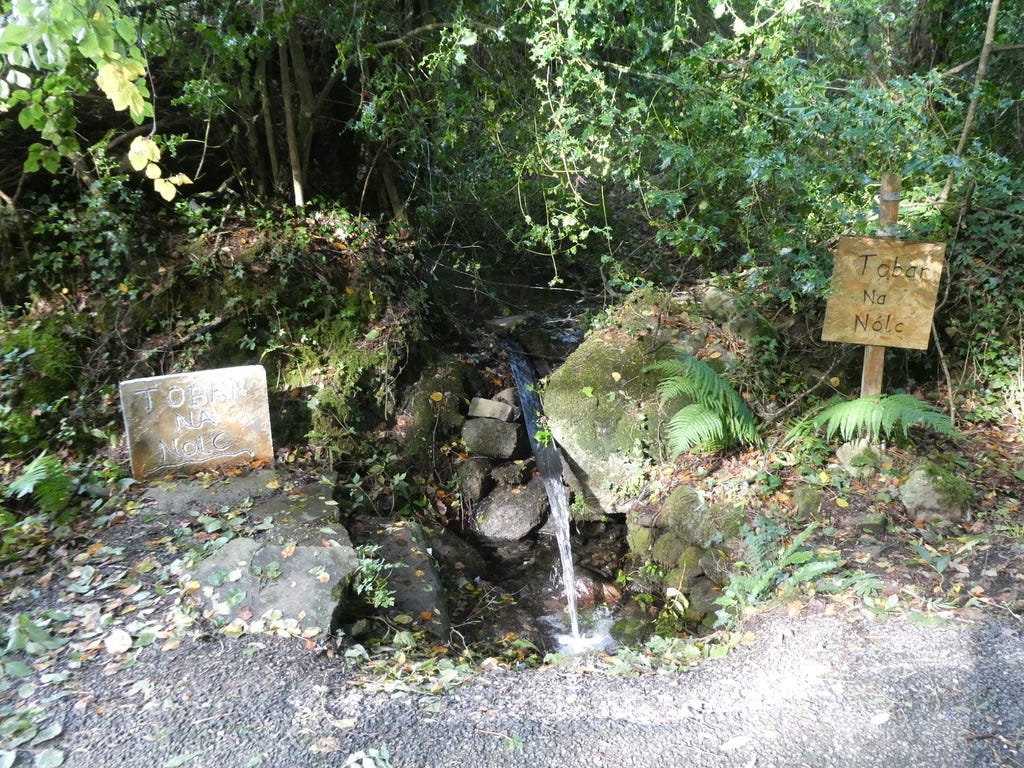
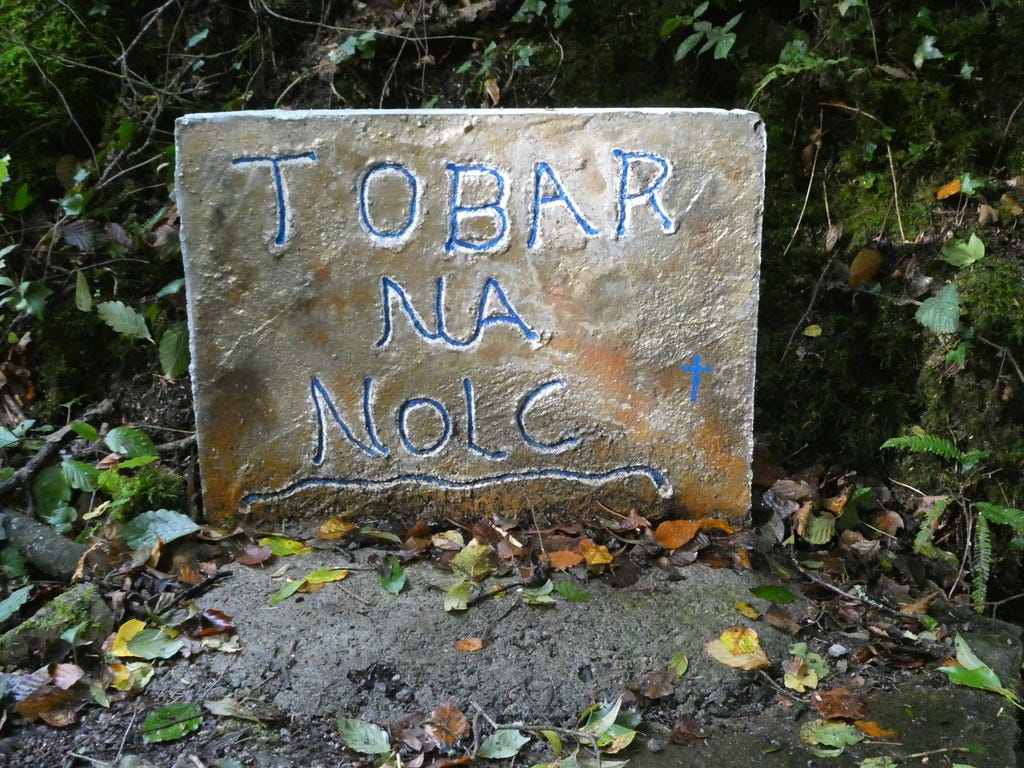
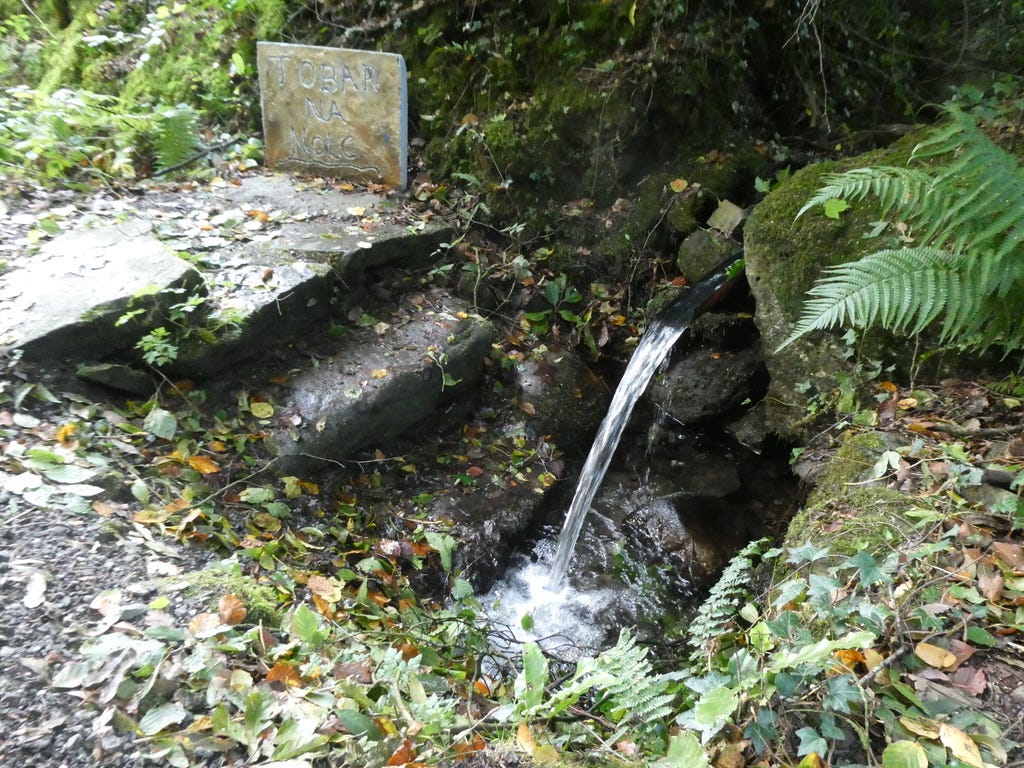
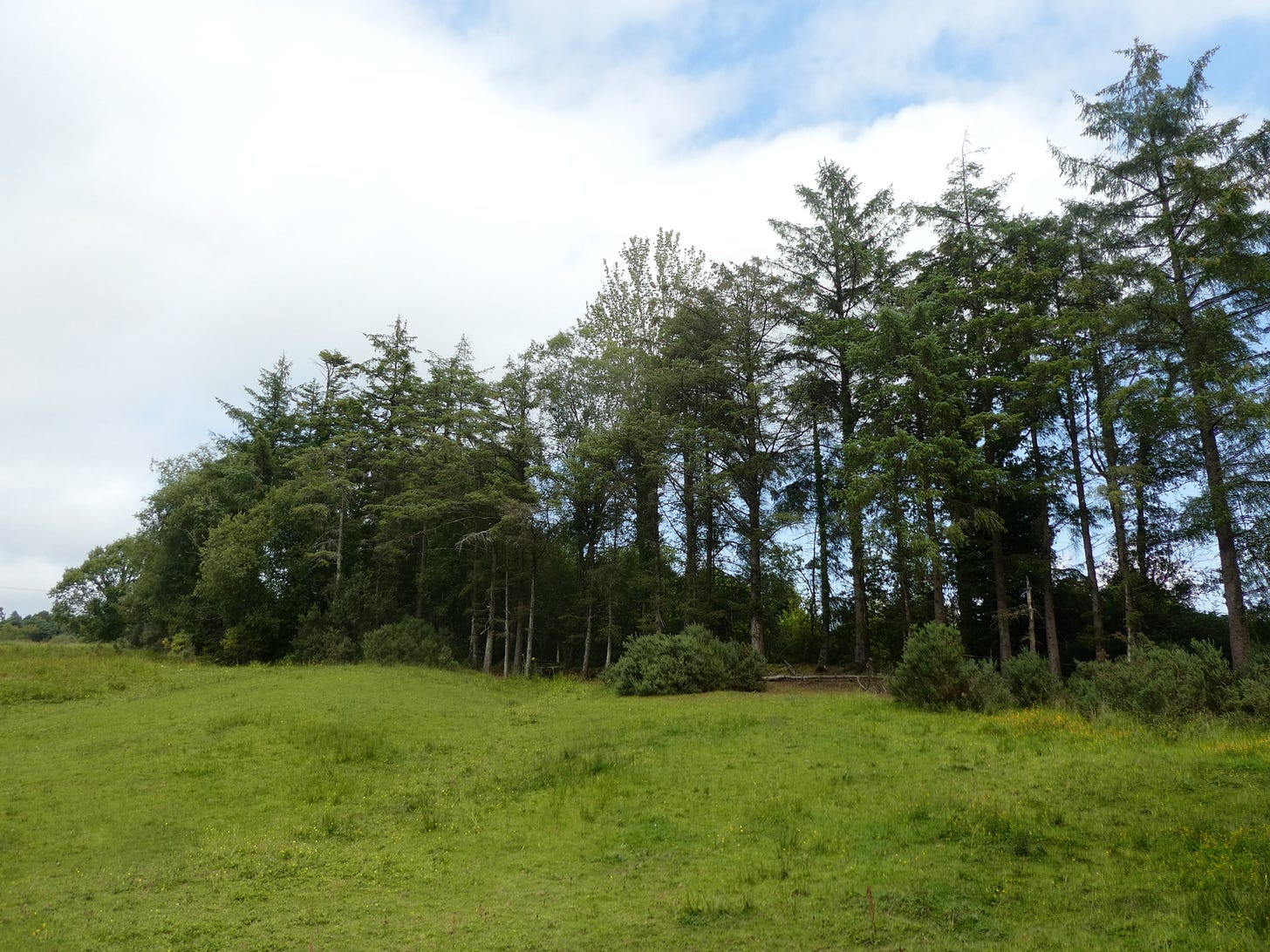
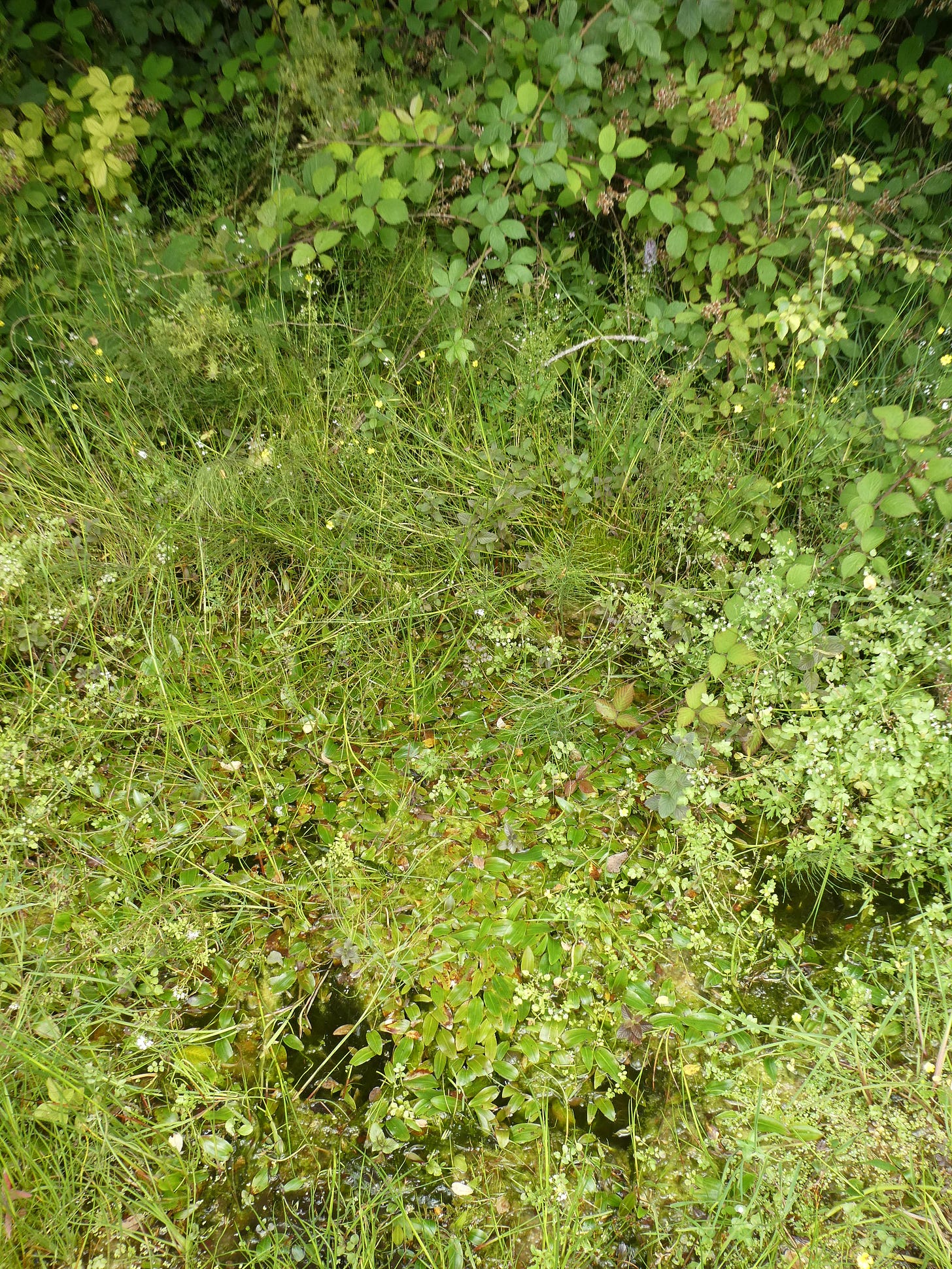
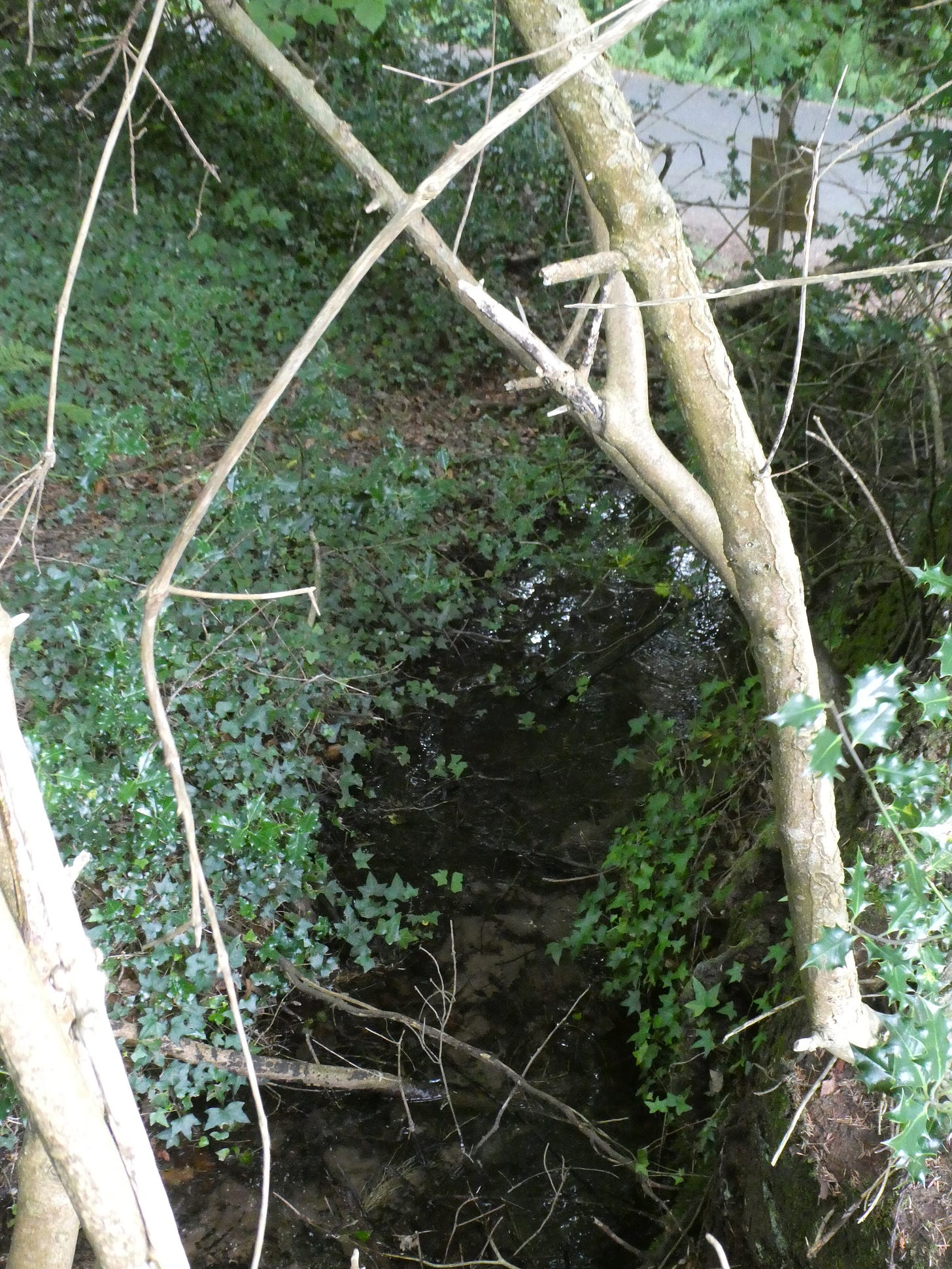
When that roving Englishman Paul Kingsnorth arrived on the shores of Ireland, he spoke these famous words:
"Veni, vidi, velcro".
"I came, I saw, I stuck around". :-)
Great! Thank you for plodding on in wet boots, it is worth it. Coming down in the world seems to be better for the soul, doesn't it?